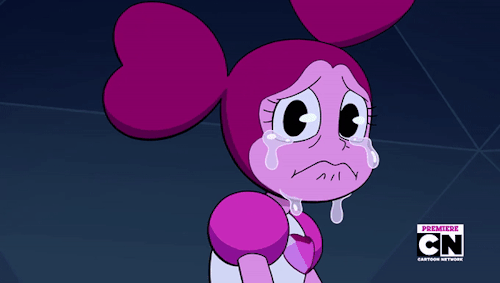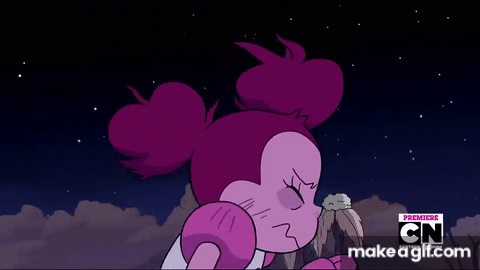After my tutorial with Ben, I came away with some more ideas to collect first-hand research for my project. I wrote up a survey on Survey Monkey;
Q1: Have you ever been diagnosed with Anxiety, Borderline Personality Disorder or Psychosis? If so, which one?
Q2: How would you describe your symptoms? (Minimum of three answers please)
Q3: Can you describe how you feel when you have bad days?
Q4: Is there a particular colour that can describe how you feel? What is it?
Q5: Do you ever notice yourself doing something physically when you get overwhelmed? i.e fidgeting with your fingers, biting your nails, etc
Q6: Have you found a way to help your mental health?
Q7: What gender do you identify as?
I will analyze the results of this survey and take them into consideration when writing up my character sheets and picking the archetypes for each character.
Friday, 25 October 2019
Thursday, 24 October 2019
Case Study: Tex Avery
Frederick "Tex" Bean Avery was an American animator and director during the "Golden Age of Animation". He is most known for creating characters such as Bugs Bunny, Daffy Duck, Porky Pig, Elmer Fudd, Droopy the Dog and many more.
He has a very distinct style, one that defined that particular era of animation; he highly exaggerates emotions for comedic effect, pushing body proportions to unrealistic degrees to really show what the character is feeling.




Even though this way of animation is very appealing, you see less and less of it in modern cartoons. Even in the most modern rendition of Looney Tunes; The Looney Tunes Show (2011) has less slapstick comedy and is more focused on the characters, their relationships and their emotions.



I want to explore more of Tex Avery's style of animation, find out why animators, director and writers have stayed clear from this exaggerated form of animation and how I can use this style to influence my own designs.
Case Study: Steven Universe the Movie
Steven Universe the Movie is the expansion on the story of the Crystal Gems. Set two years later, Steven has grown up and is happy with his life, the Diamond Authority has been disbanded, peace has been brought to the universe and uncorrupted gems are living on Earth.
Garnet, Amethyst, Pearl and Steven are all content in their lives until a new gem turns up, Spinel.
Spinel is hell-bent on destroying Steven's happily ever after by taking away all the progress he and his friends have made over the years by using a special weapon called a Rejuvinator. During the fight Steven hits Spinel with her own weapon, resetting her as well.
This becomes a major focus of the movie, Steven must remind his friends everything they have been through and who they've become through those turmoils, as well as understanding Spinel and how to help her.
Spinel is such an interesting character, she shows so much emotion through her extremely exaggerated body movements, when she is happy and devastated.





Spinel is a perfect example of a character that has mental illness, we understand it through her design; the different colour schemes and shapes between her happy to broken forms, however we also know how she is feeling through her extreme animation, her body language pushes her emotions further.
Her every emotion is showed physically and I believe that this is something that I will need to incorporate into my own character design, push the physical exaggeration as much I can to tell a story just through design.
Thursday, 17 October 2019
Case Study: Joker. Warning SPOLIERS
Joker is a new view on Gotham's Prince of Crime, with a heavy emphasis on how unchecked mental illness can seriously turn dangerous.
Arthur Fleck, the protagonist of the film, is a mentally ill party clown and aspiring stand-up comedian. He suffers with a mental disorder that causes him to laugh uncontrollably at inappropriate times, which leads to an altercation with three young bankers.
Initially in self-defence, Arthur shoots the men but then he becomes exceedingly more violent, eventually killing them.
Instead of being distraught or feeling guilty for his actions, the act of violence empowers Arthur, finally taking control of his life.
Arthur's story is one that hits very close to home, as it is such a gritty and truthful portrayal of severe mental health, how if it goes unchecked it can be a very dangerous and scary for the victim and the ones around them.
Even though Arthur is meant to be the bad guy in this film, the actor and director paint him in such a sympathetic light that you cannot help but feel sorry for him. The steps he takes to act like a normal citizen of Gotham are met with some many obstacles and he is not given the tools to overcome them, ensuring his descent into madness and to becoming homicidal.
Arthur's mannerisms change drastically during the film, from a meek and timid man, to becoming the unhinged and unpredictable Joker. The other focus of the film besides Arthur is his mental health, being a major part of his character, determining his actions and how he deals with them. He fabricates scenarios in his head, unable to identify what is reality and what is fantasy. He shows very clear signs of Psychosis, Schizophrenia, Manic Depressive Disorder and Antisocial Behaviour.
Arthur Fleck is a prime example of well thought out character with mental illness but just so happens to be bad.
Week 2: Draft Proposal Extended
I have revised and improved my draft proposal to convey properly what I wish to achieve throughout my project and essay:
Proposal
I am wanting
to explore character design with mental illness taken into consideration, as
this has become more frequent in modern character design.
I will
explore older character designs from the 1930's - 1950's, such as Mickey Mouse, Betty Boop and
early Looney Tunes, to modern characters from shows like Steven
Universe, Adventure Time and Bojack Horseman.
I will also
be looking into live-action films and television shows that focus on mental
health and take note on how it is portrayed, using the information that I
gather to better my own designs and learn how the characters gain sympathy, animosity
or adoration through simple design choices.
As appeal is
one of the twelve principles of animation, I want to explore how this translate
theoretically to character design as well. I will be reading on how to make
informed decisions throughout designing the characters, whether they are the
protagonists, antagonists or the comic relief and how you can push these defined
archetypes to create more complex and even more appealing characters.
Research
into particular mental disorders will be imperative to this project, on disorders those
that I am familiar with and ones that require further study; symptoms,
reactions, dangers and recovery that is involved with each particular illness.
I want to focus on three particular mental disorders; one that is particularly common, one that I know a lot about and one that I am not that familiar with.
I want to focus on three particular mental disorders; one that is particularly common, one that I know a lot about and one that I am not that familiar with.
I will also
conduct interviews with professionals, people who suffer from the disorders,
people’s own opinions on mental health and drawing from my own experiences with
mental health.
Colour and
shape theory will play a huge part in the project, as both will determine how
the characters are portrayed by the audience. I will experiment with different
colour schemes and design the characters with certain shapes in mind to visually
communicate what the character represents.
My practical
work will be one or a series of character designs that have been thoroughly
thought out, taking in colour and shape theory also getting feedback from
outside source to make sure I am clearly conveying the right message across.
From my first
and second hand research, I will determine what attributes to focus on for each
mental illness to make the distinctive from each other. I will gather my peer’s
opinions of each stage of the design process and take on the constructive criticism
to improve my designs where necessary.
I will be
creating characters with backstories, which means I will have to think how this
would affect their personality, their relationships and their outlook on the
world. Creating in-depth character sheets will aid me in creating competent
decisions on the characters’ physical appearance.
I was also
thinking of showing the journey of a character going through mental illness;
before, initial stage, during, recovering and recovered. Exploring different
ways of showing the internal struggle physically.
Case Study: El Camino A Breaking Bad Film
El Camino is the tale of Jesse Pinkman after he is freed by his former partner in crime Walter White from a white supremacy gang, who had imprisoned him to cook White's signature crystal meth.
The film shows Pinkman dealing with the trauma that he went through as he is evading the law. Showing clear signs of PTSD and even Stockholm Syndrome without really addressing it directly.
Aaron Paul, the actor portraying Jesse, shows exactly how he is feeling through the intense acting; from his initial escape and the overwhelming joy he feels, to panic from his extreme flashbacks remembering his time with his captors, to the dark, brooding and controlled way he fights for to escape from the law, to finally coming to peace as he is finally free from his torment and the people that caused it.
Even down to the way he dresses, you can see that he has gone through an immense change in character; from when he was a young, naive and, in some ways, stupid drug dealer to a hardened, wisen and experienced individual shows through the colour and textures of the clothing he wears in the respective scenes.
Wednesday, 16 October 2019
Week 2; Research into Mental Illness
In order to create concise characters with mental illness, I had to do research into the particular disorders that I had chosen:
1. Anxiety Disorders can be an ongoing and impact the ability to live your life as you want to.
.General Anxiety disorder: The most common type of anxiety disorder;
Symptoms
- Over worrying
- Feeling out of control
- Feeling on edge
- Alert to your surroundings
- Muscles tension and sweating
Cause of Anxiety
- Genetics
- Life Experience; this could be bad experiences such as being bullied or losing a loved one.
- Drugs: Caffeine and alcohol
- Circumstances
Self Help
- Meditation
- Eating healthy regularly
- Exercise
- Have a daily routine
- More sleep
- Keep a mood diary
2. BPD: Borderline Personality Disorder:
BPD is an illness that affects the way you think and feel about yourself, as well as your emotions and relationships with other people. Sometimes called emotionally unstable personality disorder (EUPD)
- BPD means that you feel strong emotions which can be difficult to cope with. You may feel angry or upset very often.
- Around 1 in 100 people have BPD.
- Having BPD can make it more likely that you will self-harm or act impulsively
Symptoms
Experiences of living with borderline personality disorder are unique to each person. You only need to experience 5 of the following to be diagnosed with BPD.
- Extreme reaction to feeling abandoned.
- Unstable relationships.
- Confused feelings about who you are.
- Being impulsive in a dangerous way.
- Self-harm, suicidal thoughts and behaviours.
- Feelings of emptiness or feelings of abandoned.
- Difficulty controlling emotions and anger.
- Overwhelming mood swings.
- Paranoid thoughts when your stressed.
Red highlighted symptoms are my own symptoms
BPD can be difficult to diagnose because the symptoms are similar to depression, psychosis and bipolar disorder.
BPD can also be diagnosed alongside depression and different anxiety disorders.
Types of BPD
Borderline type: Difficulties with relationships, self-harming and feelings of emptiness.
Impulsive type: Difficulties with impulsive behaviour and feelings of anger.
Causes of BPD
- A traumatic childhood, such as neglect, abandonment or abuse.
- Genetics; However there is no clear evidence that there is a gene that causes BPD.
Treatment for BPD
Talking therapies: The most common treatment of borderline personality disorder is talking therapy.
- Dialectical behavioural therapy (DBT): helps you build skills with distress other than harmful.
- Cognitive analytical therapy (CAT): helps you understand problems you have in relationships, and change patterns of helpful behaviour.
- Mentalisation-based therapy (MBT): help you make assumptions about what other people think or feel.
- Medication: there is no medication for BPD.
3.Psychosis
If you are experiencing psychosis, you might see or hear or believe things that others may not. You may believe your experiences are real.
- Psychosis is a medical term used to describe seeing, hearing or believing things that others do not.
- Common symptoms of psychosis are hearing voices and believing others are trying to harm you.
- There is no one single cause of psychosis, but genes and your environment can play a part.
- It can be a symptom of mental illnesses such as bipolar disorder or schizophrenia.
Symptoms
- Hearing voices.
- Seeing things with other people do not see.
- Feeling someone touching you who is not there.
- Smelling things which other people cannot.
Delusions
- You are being followed by secret agents or members of the public.
- People are out to get you or trying to kill you.
- Something has been planted in your brain to monitor your thoughts.
- You have special powers, are on a special mission or in some cases that you are a God.
Cognitive Experiences
- Being unable to concentrate.
- Memory problems.
- Unable to take on information.
- Poor decision making.
Diagnosis
Anyone can develop psychosis, men and women are equally affected.
Causes of Psychosis
- Genetics
- Chemicals: Dopamine increase can cause hallucinations, delusions and disorganised thinking.
- Childhood Trauma
- Drugs
- Stress
Treatment
Medication
- Olanzapine
- Repiridone
- Clazapine
Cognitive Behavioural Therapy (CBT).
Tuesday, 8 October 2019
Year 3 - Draft Proposal
After the initial presentation, I was made aware that I had a clear idea on what I wanted to do my practical work on, character designs that are affected by certain mental health issues and using particular shapes and colours to enhance their design, but I wasn't to sure how to write this into 5000 word essay.
After writing a draft of my proposal, I do have a clearer idea on how I want to approach the subject matter, however I need to be able to organise my thoughts better on paper.
Initial Draft Proposal:
After writing a draft of my proposal, I do have a clearer idea on how I want to approach the subject matter, however I need to be able to organise my thoughts better on paper.
Initial Draft Proposal:
I am wanting
to explore character design with mental illness taken into consideration, as this
has become more frequent in modern character design.
My practical
work will be one or a series of character designs that have been thoroughly
thought out, taking in colour and shape theory also getting feedback from
outside source to make sure I am clearly conveying the right message across.
I will
explore how very early character designs, such as Mickey Mouse, Betty Boop and
early Looney Tunes, to modern characters from shows like Steven Universe,
Adventure Time and Bojack Horseman.
As appeal is
one of the twelve principles of animation, I want to explore how this translate
theoretically to character design as well. I will be reading on how to make
informed decisions through out designing particular characters, whether they
are the protagonists, antagonists or the comic relief and how you can push these
defined archetypes to create more complex and even more appealing characters.
I will be
creating characters with backstories, which means I will have to think how this
would affect their personality, their relationships and their outlook on the
world. Creating in-depth character sheets will aid me in creating competent decisions
on the characters’ physical appearance.
Research
into particular mental disorders will be imperative to this project, on those
that I am familiar with and ones that I need to learn more about; symptoms, reactions,
dangers and recovery that is involved with each particular illness.
I was also
thinking of showing the journey of a character going through mental illness;
before, initial stage, during, recovering and recovered. Exploring different
ways of showing the internal struggle physically.
Subscribe to:
Comments (Atom)
Conclusion
This project has allowed me to expand my knowledge on character design and help me better my choices when designing. I had a basic idea on...
-
Summary - What is Madness? This chapter elaborates on how the human mind deals with traumatic events that we have experienced in our earli...
-
Riley is a main character and her mind is the main location of the film. She is a really interesting character to analyse, she...
-
The week before I decided to use the characters that I create in Context of Practice for a film I want to create for Extended Practice. Th...










